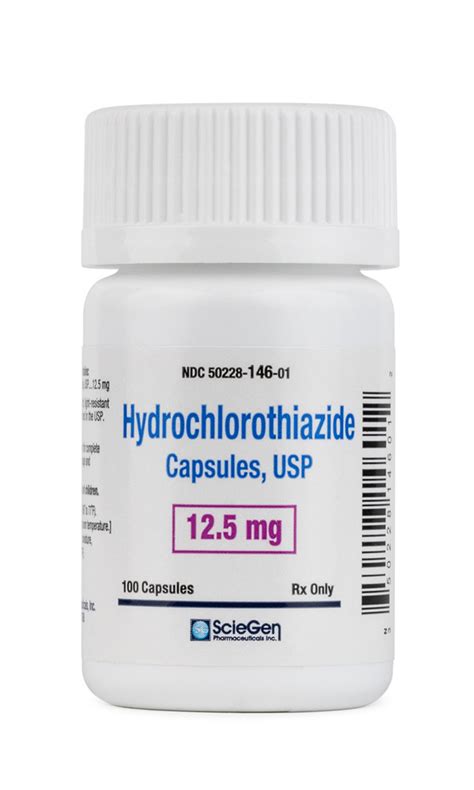Intro
Discover the versatile uses of Hydrochlorothiazide, a diuretic medication, including treating hypertension, edema, and kidney diseases, while managing conditions like nephrotic syndrome and congestive heart failure.
Hydrochlorothiazide, commonly referred to as HCTZ, is a diuretic medication that has been widely used for several decades. It belongs to the class of thiazide diuretics, which work by helping the kidneys remove more waste and excess fluids from the body. This process is crucial for managing conditions like high blood pressure and edema. The versatility of hydrochlorothiazide is evident in its various applications, which not only include treating hypertension and fluid retention but also extend to other medical conditions. Understanding the uses of hydrochlorothiazide is essential for appreciating its role in modern medicine.
The importance of hydrochlorothiazide lies in its ability to address a range of health issues, making it a staple in many treatment regimens. Its effectiveness in managing hypertension, for instance, has been well-documented, highlighting the drug's potential to reduce the risk of heart disease, stroke, and kidney damage. Moreover, hydrochlorothiazide's application in treating edema associated with congestive heart failure, liver cirrhosis, and a nephrotic syndrome underscores its utility in managing fluid balance within the body. As research continues to uncover the benefits and mechanisms of hydrochlorothiazide, its significance in the medical community is likely to endure.
Given the broad spectrum of hydrochlorothiazide's uses, it is essential to delve into the specifics of its applications, benefits, and potential side effects. This exploration will not only shed light on the drug's efficacy but also provide insight into its role in contemporary healthcare. By examining the various uses of hydrochlorothiazide, individuals can better understand how this medication contributes to the management of different health conditions, ultimately leading to improved patient outcomes.
Introduction to Hydrochlorothiazide

Benefits of Hydrochlorothiazide
The benefits of hydrochlorothiazide are multifaceted, reflecting its versatility as a therapeutic agent. Some of the key advantages include: - **Hypertension Management:** Hydrochlorothiazide is effective in lowering blood pressure, thereby reducing the risk of cardiovascular events such as heart attacks and strokes. - **Edema Treatment:** It helps in reducing swelling caused by fluid retention, improving the quality of life for patients with conditions like congestive heart failure or cirrhosis of the liver. - **Nephrolithiasis Prevention:** There is evidence suggesting that hydrochlorothiazide can help prevent the formation of certain types of kidney stones by reducing calcium excretion in the urine.Uses of Hydrochlorothiazide

Working Mechanism of Hydrochlorothiazide
The working mechanism of hydrochlorothiazide involves its action on the kidneys, specifically the distal convoluted tubule. By inhibiting the sodium-chloride symporter, it reduces the reabsorption of sodium and chloride ions, leading to increased excretion of sodium, chloride, and water. This results in a decrease in blood volume and subsequently a reduction in blood pressure. The diuretic effect of hydrochlorothiazide also contributes to its efficacy in treating edema.Side Effects and Precautions

Practical Examples and Statistical Data
Studies have shown that hydrochlorothiazide is effective in reducing systolic blood pressure by approximately 10-15 mmHg and diastolic blood pressure by about 5-10 mmHg in patients with hypertension. Additionally, its use in preventing kidney stones has been supported by clinical trials demonstrating a significant reduction in stone recurrence rates among patients treated with hydrochlorothiazide compared to those receiving placebo.Conclusion and Future Directions

We invite you to share your thoughts and experiences with hydrochlorothiazide in the comments below. If you found this article informative, please consider sharing it with others who might benefit from this information. Your engagement helps us create more relevant and useful content for our readers.
What is hydrochlorothiazide used for?
+Hydrochlorothiazide is primarily used to treat high blood pressure and edema (fluid retention) associated with various conditions, including congestive heart failure, liver cirrhosis, and a nephrotic syndrome.
How does hydrochlorothiazide work?
+Hydrochlorothiazide works by inhibiting the reabsorption of sodium and chloride in the kidneys, leading to increased urine production and a subsequent decrease in blood volume and blood pressure.
What are the common side effects of hydrochlorothiazide?
+Common side effects of hydrochlorothiazide include electrolyte imbalance, dehydration, increased blood sugar levels, and allergic reactions. It is essential to monitor these effects and adjust treatment as necessary under the guidance of a healthcare provider.
